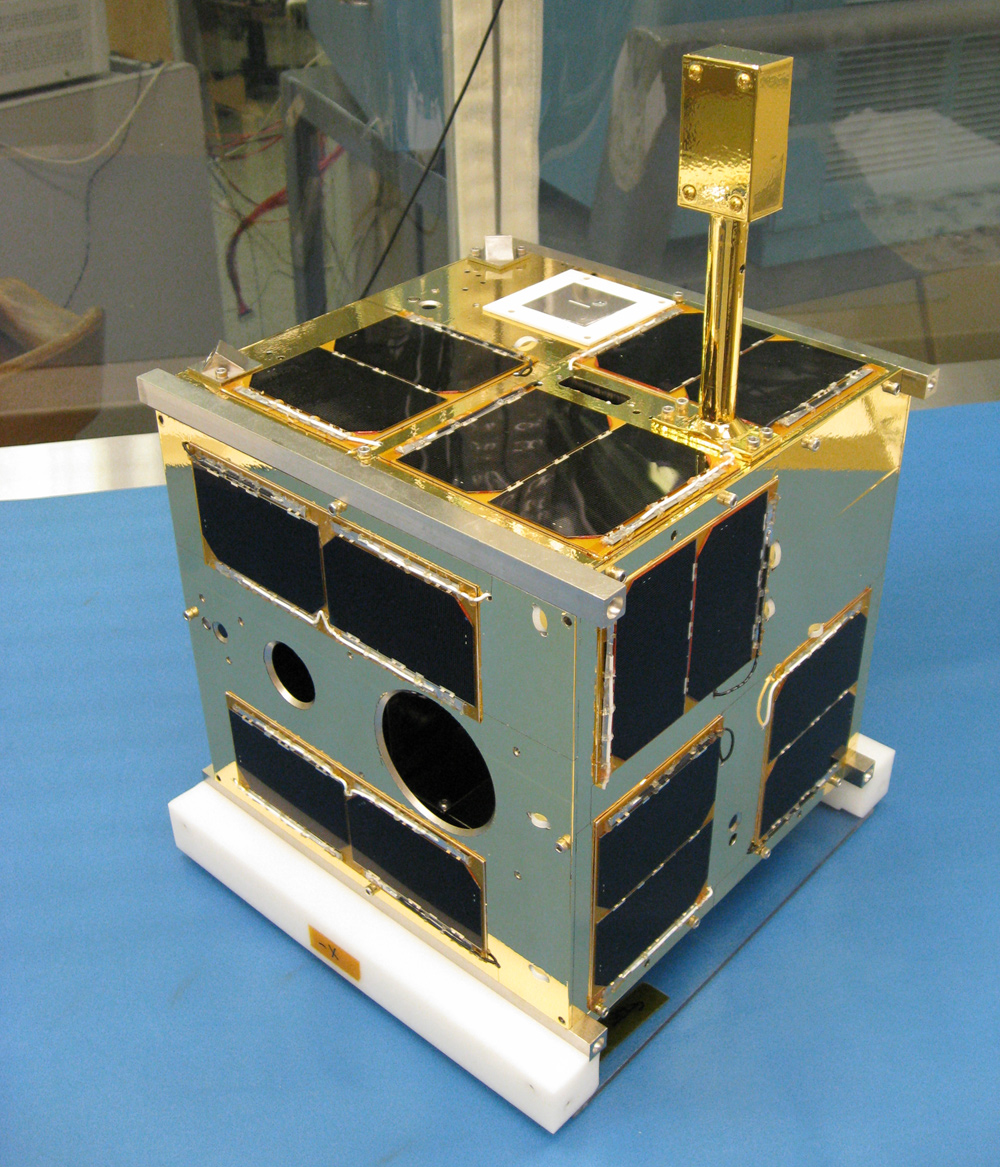The BRITE Constellation
A fleet of nanosatellites to study the brightest stars in the night sky—stars familiar to the eye, but still harbouring mysteries hidden from the world's largest telescopes.
- Launch: February 25, 2013 (the first two satellites)
- Status: Successfully launched
Canada's MOST space telescope will soon have company to study the "twinkling" of stars in our Galaxy. Not the twinkling you see at night, but the true vibrations of stars that are often detectable only above the Earth's turbulent atmosphere. The six nanosats of the BRITE (BRight Target Explorer) Constellation will join MOST in orbit to make highly precise measurements of the brightness variations of a large number of bright stars. Many of those stars are not just the brightest to your eye: they are among the brightest in energy output of all stars in our galaxy.

Artist concept of a BRITE Constellation nanosatellite. (Credit: UTIAS Space Flight Laboratory)
Thanks to BRITE Constellation—the first space astronomy mission to be carried out with nanosats—astronomers will be able to learn more about the structure and evolution of the most luminous stars, including massive blue stars that are the precursors to supernova explosions. How will BRITE do this? The hidden interiors of these stars will be probed seismically by observing surface vibrations caused by sound waves generated by turbulence deep inside the stars. Some of the stars targeted by BRITE generate the heavy elements needed to give birth to new generations of stars and planets. Our solar system—including our home, Earth—are made from elements produced by earlier generations of these massive luminous stars.
Canada is a partner in BRITE Constellation with Austria (University of Vienna and Graz University of Technology) and Poland (Copernicus Astronomical Center), and is funding two of the six satellites: BRITE-CA1 and BRITE-CA2. BRITE's design originates from a Canadian science case and concept developed by Emeritus Professor Slavek Rucinski of the University of Toronto, inspired by technology developed for MOST. All six nanosatellites are built according to that concept.
The tiny space telescopes are contained within 20-centimetre cubes weighing no more than 8 kilograms, each about the size and weight of a car battery (by comparison, MOST weighs 53 kg and is about the size of a large suitcase). Each satellite has a camera that can study up to a dozen stars at a time for long intervals. Four communications stations (two in Austria, one in Poland, and one at the University of Toronto Institute for Aerospace Studies (UTIAS) in Canada) will receive the data collected by the flotilla of space telescopes. To ensure proper coverage of the slow oscillations of some of these stars, each star will be observed for about six months in two different monitoring sessions.
The asteroseismic observations made by BRITE and MOST cannot be achieved from Earth, as changing conditions in Earth's atmosphere mask the intrinsic variability of the stars at the low amplitudes and long timescales necessary for this type of science. The science may be big in scale, but the satellites are small in size, and hence, so is their cost. The BRITE Constellation represents a very cost-effective solution to a major area of astrophysical research.
The construction and launch of BRITE-CA1 and BRITE-CA2 are funded by the Canadian Space Agency (CSA). All six satellites were designed by the UTIAS Space Flight Laboratory (UTIAS-SFL). Emeritus professor Anthony Moffat (Université de Montréal) is the scientific mission lead for the Canadian contribution to BRITE. Prof. Jaymie Matthews (University of British Columbia), Prof. Stefan Mochnacki and Prof. Emeritus Slavek Rucinski (University of Toronto) are also part of the Canadian BRITE team. The Graz University of Technology has used the plans developed by UTIAS-SFL to build one of the Austrian satellites. In addition to the two Canadian BRITE nanosats, three others (one for the University of Vienna, Austria, and two for the Copernicus Astronomical Center, Poland) will come from UTIAS-SFL directly.
